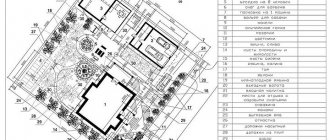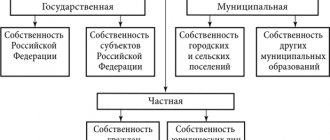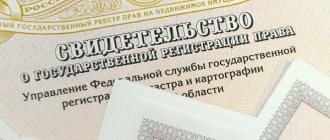Free legal consultation!
The formation of such a legal institution as private property occurred in Ancient Rome. Today, this concept implies a form of property that has an absolutely protected right of an individual or legal entity regarding specific property along with the means of production.
However, this word also has another meaning, the concept of private property is an object that can belong to an individual citizen or his family or a united group of people in the form of a plot of land with all the property that is located on it. The list of such property includes buildings, residential premises, enterprises and production facilities. In addition, property can be presented in the form of cash, shares, bonds and other securities.
What is private property, legislative regulation
The concept of private property returned to the territory of the Russian Federation after the collapse of the Soviet Union, and with it communism, starting in 1990. Before this time, throughout the entire territory of the Union there was no such thing as private ownership; instead, there was the concept of personal property. This concept gave citizens the right to dispose of their personal belongings as they saw fit.
This right applied exclusively to things and personal items. Real estate, land plots and other objects, including economic activities, were subject to collective disposal and could not be private property. All this kind of property was at the disposal of the so-called collective farms - collective farms or in municipal state funds.
Any property that falls under the category of private property cannot be state property. And the subjects can be either an individual citizen or a joint group of individuals or a legal entity. The owner of private property, on legal grounds confirmed by the right to private property, has the right to control and dispose of his property for any purposes provided for in the Civil Code. He can transfer his property by inheritance, make an act of donation, or sell property without coordinating the actions with public authorities.
This legal institution is an integral part of the market economy and has a significant impact on it. An example of this is that if this legal institution becomes more complex, significant changes are bound to occur in the market. With flexible property relations relative to private property, there is an increase in the range of supply and demand of the real estate market.
Privatization means giving private status to property that was previously at the disposal of a municipal or state real estate fund. This phenomenon has become widespread since the collapse of the Soviet Union in 1990, and is still carried out regularly in large volumes.
In accordance with paragraph 2 of Article No. 9 of the Constitution of the Russian Federation, private ownership is recognized at the legislative level as one of the 3 main forms of property ownership. The restoration of this institution after a long absence during communism was carried out by domestic legislation in the early 90s.
Article No. 213 of the Civil Code of the Russian Federation defines private property as property in any form that is in the individual or collective possession of citizens, except for certain types of property that, by law, cannot be private property.
There are no restrictions regarding the quantity and price of property that is the private property of an individual or legal entity, unless provided for by law. According to paragraph 2 of Article No. 1 of the Civil Code, restriction of rights is possible only based on Federal Law to the extent necessary in order to preserve:
- constitutional foundations;
- moral;
- life and health;
- the rights and legitimate interests of others;
- defense capability of the state;
- state security.
3.2. Types and forms of ownership
Under property type
refers to
a special stage in the development of property
;
form
refers to
the ownership of factors (resources) and production results by subjects
. The type and forms of ownership are directly dependent. They are determined by specific historical conditions and develop within the framework of a particular socio-economic system.
Each type of property has its own specific forms of ownership.
There are two types of property: private and common.
Private property
assumes that
individuals treat the means of production (resources) and the results of production as their own
. It originated from private production (craft, trade, etc.). Objects of private property are clothing, shoes, food, etc., i.e. personal items. There are two types of private property: labor private property and non-labor private property.
Labor private property
- This is
personal property
. Its subjects are peasants, artisans, farmers, workers in various fields and industries, entrepreneurs - small producers. They are both owners and employees. They all appropriate the results of their labor, through which they increase their property and live. However, labor private property is neither the dominant nor the predominant type of property anywhere.
Unearned private property
, on the contrary,
presupposes the separation of labor and property
. Factors of production are owned by a few individuals, resulting in wealth inequality. Society is split into opposing classes and social groups, some of which monopoly own and control the factors and results of production, while others are deprived of them. The poor are forced to work for the owner and are completely economically dependent on the latter. An example of this type of private property are Asian, ancient, feudal and capitalist socio-economic systems.
Common property
represents
a shared commons
, i.e. belonging of certain objects to a family, community, association, team, people, state, society. All subjects have a real and equal right to own, use and dispose of property, taking into account personal, collective and state interests. Common property can become private property and vice versa. For example, family property goes from common to private (shared) when a share is allocated to the son, and, conversely, the wife’s property (dowry) is merged into common property. Certain objects of common property can be in joint use (house, apartment, etc.), while others can be in individual use (personal belongings).
In modern conditions, it is hardly possible to find a country where only one type of property exists in its pure form - private or common. Therefore, the modern economy is called mixed, i.e. both types of property can be found in it.
This is important to know: Grounds and methods for acquiring and terminating ownership rights
In Russian federation
according to the existing Civil Code (1995), there are the following forms of ownership:
private, state, municipal and other forms of ownership
(joint, collective, intellectual, property of public organizations (associations), foreign states, legal entities and citizens).
Private property
- this is
the ownership of citizens in land plots, housing, houses, garden houses, garages, household and personal consumption items, cash, securities, enterprises in the production of goods, consumer services and trade, vehicles and other property
. The owner can dispose of private objects at his own discretion (sell, bequeath, lease, etc.).
Private property is created and increased in two ways:
at the expense of personal (own) labor and labor in the public economy, in entrepreneurial activity, from monetary securities, inherited property;
through the use of permitted hired labor and anti-legislative acts (corruption, bribery, extortion, etc.).
Private property can be collectively shared and individually shared.
State property appears in the form of federal property and property of subjects (territories, regions, republics) of the federation
. It is managed by state property management committees at the appropriate levels. Objects of federal property are the property of government bodies and management of the Russian Federation (buildings, structures, equipment, cultural and historical values of the country, air, river, land transport, State Budget funds, pension, insurance and other funds, communications, fuel and energy complexes, etc. .), which are necessary for the implementation of tasks at the country level.
The subjects of the Russian Federation own the property of the authorities and administrations of territories, regions and republics (buildings, structures, cultural and historical values of the peoples inhabiting these territories, banks, enterprises, transport, etc.).
In Russia, the share of state ownership is not as large as in France, China, Israel, Austria and other countries. In our country, state ownership together with municipal property is 11.4%, private – 82.8%, mixed – 5.8%.
Municipal property
– is
the property of local authorities and management, i.e.
it is administered by local governments .
This includes city, district, settlement property and property of rural settlements
. Its objects are local budget funds, housing stock, heat, water, gas, electricity supply facilities, transport, public services, industrial and construction facilities, educational, cultural and healthcare institutions.
Joint ownership
- this is
the property of joint ventures created with the participation of Russian legal entities and citizens, as well as foreign legal entities and citizens on the territory of the Russian Federation in the form of joint-stock companies, and other business entities and partnerships
.
Collective (cooperative) property
–
common property created by combining the property of private, state, municipal property and the property of public organizations (associations)
. Property is simultaneously owned by several persons with the determination of the share of each of them (common ownership) or without determination of the shares (joint ownership).
Property of public organizations (associations)
–
property of trade unions, sports societies, cultural and educational institutions, youth organizations, various parties and movements, etc.
This category of property also includes the property of religious organizations, objects of worship, industrial, social and charitable purposes, funds, charitable foundations, etc. These organizations can also engage in entrepreneurial activities.
Intellectual property
–
property of creative workers
. Its objects are works of literature, science, art and other types of creative activity, as well as scientific discoveries, inventions, industrial designs, computer programs, know-how, trade secrets, trademarks, trade names and service marks.
Forms of ownership change in accordance with prevailing conditions in both evolutionary and revolutionary ways.
Evolutionary path of property development
assumes that preferential development is given to those forms of property that prove their viability.
The revolutionary way of changing forms of ownership
consists in the forcible assertion of the dominance of new forms of property.
Changes in forms of ownership reflect the concepts of “ nationalization”
", "
denationalization
" and "
privatization
". They are methods for increasing the efficiency of national economies.
Contents and features of private property
Private ownership contains three main types of realization of the subjective rights of the owner. Each of these types has significant differences in the powers and rights that it provides.
- Right of ownership. The legal authority to actually possess and maintain property.
- Right to use. The authority that allows the exploitation of economic or other property, extracting useful properties from it.
- Right to disposal. Allows the owner to determine the legal fate of the property by changing its ownership, condition or purpose.
The main characteristic of the powers that the owner has is that he can exercise them at his own discretion. The owner independently disposes of his property based on his interests. The main thing is that his actions do not contradict established legislation and do not violate the rights and legitimate interests of others.
The features of private property include the following:
- The owner's well-being, security, freedom and independence increase. Economic stability appears. Owning houses and apartments increases flexibility not only in terms of housing, but also in financial terms.
- Preserving and increasing the profitability of property, if it is directly related to production, in order to minimize its payback period.
- Ensuring the development and competitiveness of property, if this concerns enterprises.
Legal guarantees
It is the state that is represented as the guarantor of the protection of private property. For this purpose, special regulations have been adopted that are valid throughout the country.
Basic information is contained in the following documents:
- Article 35 of the Constitution. This regulatory act is represented by the main federal document, which establishes the rights and freedoms of Russians. Here the principles of ownership of any property are indicated.
- Article 2 of the Civil Code. It sets out the basic principles relating to private ownership.
- Article 12 of the Civil Code. Here the procedure is established on the basis of which the rights to certain values are determined. They can be obtained by a person after purchase, long-term use or restoration of an optimal state.
- Article 17 of the Universal Declaration of Human Rights. It indicates that a citizen can be the sole owner of property or own any benefits with other persons.
- Article 301 of the Civil Code. The real owner can return his valuables stolen or otherwise obtained illegally by another entity if he has evidence of a crime.
- Article 304 of the Civil Code. The provisions of this regulatory act are used if the use of property is associated with certain difficulties created by other persons or organizations.
- Article 1.2 of the Code of Administrative Offences. It provides for administrative penalties that apply to border violators or persons who encroach on other people's things in various ways.
- Article 2 of the Criminal Code. Criminal penalties for crimes related to the ownership of any property are indicated.
There are many more articles and provisions from the Code of Administrative Offenses that relate to the punishment of criminals and offenders trying to violate private law.
The essence, types and rights of private property
There are several types of private ownership:
- plot of land;
- living space;
- funds of individual entrepreneurs.
Today, the acquisition of land plots occurs on the basis of paragraph 1 of Article 15 of the Land Code. Which provides for the acquisition of plots on a general basis, as prescribed in the Civil Code and through transactions. In addition, citizens can purchase land plots that are under state or municipal control. Privatization of such plots can be refused only if they are in public circulation and are not included in the reserve for state or municipal needs. Also, privatization cannot be carried out if a federal ban is imposed on the site, as provided for in paragraph 4 of Article 28 of the Land Code of the Russian Federation.
When a citizen uses legally publicly owned land, he has the opportunity to further acquire it through a simplified procedure.
Any right to a land plot owned by a citizen is forcibly registered by the state. And the allotment itself, as an immovable object, undergoes the procedure of state cadastral registration, which is characterized by both technical and legal components.
The cadastral document flow itself does not have legal significance; the information is used to determine the territorial boundaries of the site and enables the owner to exercise his rights. For example, the alienation of a land plot through its purchase and sale occurs only if it has a cadastral code.
Property rights on a land plot, based on generally accepted rules, imply that everything that is within the plot, including surface soil and natural resources, is also the private property of its owner. But regarding the subsoil of the earth, they will constitute a separate, independent unit, which cannot be assigned to the owner of the site without certain conditions.
Concept
Scientists call inviolability differently - the freedom to exercise one’s own rights to any property. Typically, this concept is characterized as the protection of real estate from attacks by other persons, the state or companies. Therefore, it is prohibited to perform any actions that are not consistent with the will of the owner.
The inviolability of private property guarantees that any person can act autonomously and freely in relation to his property.
Free legal consultation
+7 800 350-51-81
The Constitution enshrines 3 basic properties relating to the ownership of any valuables, these include:
- Possession. The person who is the official owner of the property independently decides on the boundaries of ownership. He decides how to protect values, how to use them, and also in what ways to maintain an optimal state.
- Usage . Any citizen can buy or independently create any goods to obtain a certain benefit. Therefore, he independently decides in what ways he will apply the values.
- Order. Any property owned by a person by right of ownership can be gifted, inherited, sold, or given for temporary use to another person or company. In this case, the owner independently decides for how long and for what fee his benefits will be transferred.
Reference! If a citizen discovers that his rights related to private property are being violated, he can use the help of the police and also file a claim, and the court can decide to protect, replace or restore damaged valuables.
What are private property objects?
An object of private property is considered to be a type of any property, except that at the legislative level cannot be such in accordance with paragraph 1 of Article 213 of the Civil Code of the Russian Federation.
There are no restrictions on the quantity and price of private property of each citizen, except for those established by law. A number of such restrictions include those based on Federal Law. State restrictions are carried out solely in order to protect the constitutional foundations, morality, health, rights and legitimate interests of others, the defense capability and security of the state.
There are two legal regimes for private property: general and special.
By general legal regime we mean the presence of the same rules that apply to all owners and do not mean any special restrictions regarding the quantity, value and use of private property.
What types of property are enshrined in the laws of the Russian Federation
The Constitution of the Russian Federation and codified acts indicate 3 types - individual, partnership and collective. To understand the specifics of the transfer of ownership, a specific example with a list of documentation should be given.
For example, 1 citizen purchased land under a sale and purchase agreement for cash. All necessary papers were provided to Rosreestr (extract from the Unified State Register of Real Estate, certificate of land surveying and delimitation of land). Registration completed successfully. The Russian wanted to build his own house. Here you need to familiarize yourself with the purpose of the site in accordance with the Town Planning Code of the Russian Federation. Sometimes you need to ask for construction permission from the authorized bodies. To start construction you will need:
- Agree on the scheme and plan.
- Make the necessary markings.
After the plan is approved by the fire inspectorate, sanitary service and other government bodies, the construction itself can begin. You can build a house yourself (this is not prohibited by law) or involve third-party organizations and workers.
Any residential building must have communications (heating, drainage, water supply, electricity and gas). This procedure must be agreed upon with the service provider company. A citizen needs to enter into a special agreement with such a company, according to which he will pay for the service on a monthly basis.
After completion of construction, the authorized body assigns a number (location address) to the house. Only after this can a Russian apply to Rosreestr to register the house. Ownership will be officially assigned to a specific plot of land. This is a single type of citizen's property.
If such a plot and house belong to several people (family or just friends), then such property will be partnership property. An important condition is that such a partnership must be created for a specific purpose - a cooperative, a partnership. Shares here can be distributed among participants depending on the funds contributed or material benefits.
Also, this property may be the property of the joint-stock company (belong to the shareholders). Such private property will be corporate. The law does not prohibit the use of such objects of property rights to generate profit and increase capital. The activities of the enterprise are also regulated by special federal laws on joint stock companies and business activities.
Origin of private property
Private property arose as a result of the social division of labor and the development of exchange. At first, the exchange process could only be carried out by the head of the clan community in the form of an elder or patriarch. He acted as a representative of the community during the barter transaction, and the item of exchange was community property. However, over time, the social division of labor began to develop, and the level of barter transactions expanded. This led to the fact that the head of the community began to perceive the public domain as property. This led to the disintegration of communities into several large patriarchal families and the emergence of private property.
Each patriarchal family soon began to be divided into several separate units, as a result of which the private property of the family underwent another transformation. And each family unit received a certain part of this property for personal use. The more private ownership grew, the weaker family ties became. As a result, the place of tribal communities began to be taken by rural communities, the difference of which was that the co-owners of the property were not relatives. Real estate, farms and animals were the separate private property of each family.
It was from then that the development of full-fledged private property began, which we have now.
Summing up, it is clear that private property has gone through a long, difficult path of its formation to the form in which it exists now. Any property and in any quantity can be private, except for those cases provided for in state legislation.










